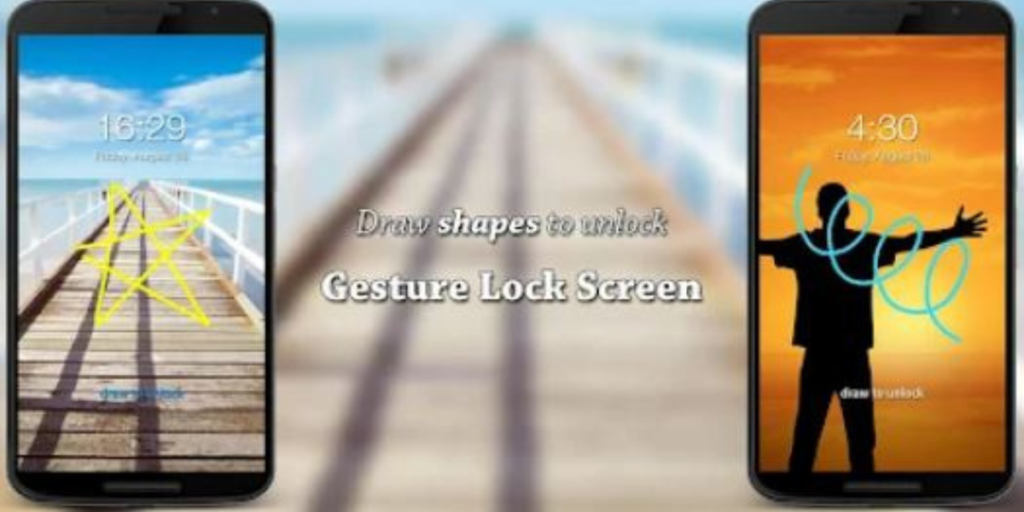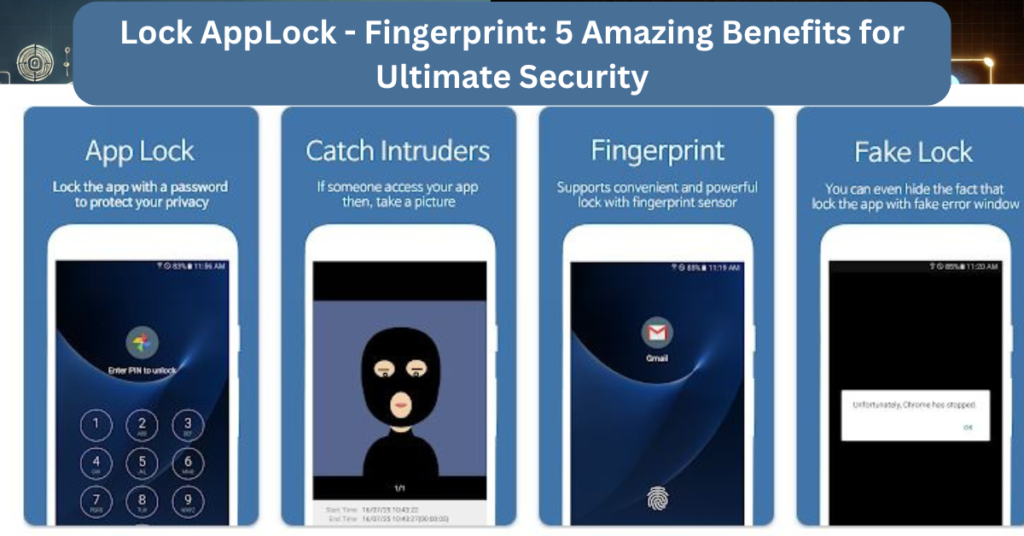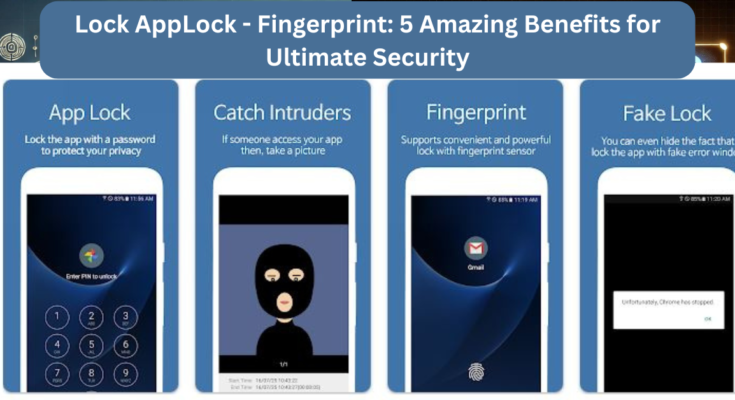Table of Contents
ToggleGesture Lock Screen: The Ultimate Guide to Enhanced Mobile Security
Introduction
Gesture Lock Screen technology has transformed how we secure our smartphones. From providing a personalized locking pattern to ensuring ease of access, Gesture Lock Screens add a layer of security and convenience to mobile devices. In this comprehensive guide, we’ll dive into what Gesture Lock Screens are, how they work, and the best apps available to help you implement this security feature.
What is a Gesture Lock Screen?
Understanding the Basics of Gesture Lock Screens
A Gesture Lock Screen is a smartphone locking mechanism that requires a specific pattern or gesture to unlock the device. Unlike traditional PINs or passwords, Gesture Lock Screens let users draw unique shapes, connecting dots or paths that create a memorable pattern for unlocking.
How Gesture Lock Screens Improve Security
1. Personalized Security
One of the primary advantages of Gesture Lock Screens is the personalized security they offer. Users can create a unique unlocking pattern that is much harder for others to guess.
2. Speed and Convenience
Gesture-based locks provide both speed and convenience. Unlike PINs, which require multiple keystrokes, users can unlock their phones in one swift motion.
3. Customization
Gesture Lock Screens also allow for customization. Apps like apkshap and mixtvnow enable users to choose different gesture styles and themes, giving the lock screen a personalized appearance that enhances the user experience.
Top Gesture Lock Screen Apps
1. Gesture Lock Screen – Mixtvnow
Mixtvnow offers a Gesture Lock Screen app that blends security with customization. It features customizable backgrounds, patterns, and easy setup, making it ideal for users seeking a straightforward yet secure lock solution.
2. APKshap Gesture Lock Screen
APKshap’s Gesture Lock Screen app provides additional features like app locking and customizable gestures. It has a user-friendly interface that helps users set their preferred patterns quickly and efficiently.
How to Set Up a Gesture Lock Screen for Optimal Security
Setting up a Gesture Lock Screen on your device is straightforward, but there are a few tips to make sure it’s secure:
- Create a Unique Gesture: Avoid simple gestures that are easy to guess. Opt for shapes that are unique and easy for you to remember.
- Adjust Pattern Visibility: Many apps allow you to hide the pattern path, making it difficult for anyone watching to replicate your gesture.
The Future of Gesture Lock Screens: Combining Biometrics and Gesture Security
As mobile security evolves, Gesture Lock Screens are likely to integrate more with biometric features such as face and fingerprint recognition. Apps like readinfos already incorporate some of these features, providing enhanced security with multiple layers of protection.
By using concise paragraphs and organizing sections with relevant subheadings, you can maintain readability and SEO optimization. After writing the full article, you can run it through tools like Grammarly and Copyscape to ensure originality and readability, helping it perform well in search engines. If you’d like, I can also break down each section in more detail, following this outline.

Understand app privacy & security practices with Google Play's Data safety section
Before you install an app from Google Play, you can check the app’s Data safety section. Developers use the Data safety section to share information about how their app handles your data. This way, you can make more informed decisions about what apps you use.
Find an app’s data safety information
- Go to play.google.com.
- Browse or use the search bar to find an app.
- Select an app.
- Under “Data safety,” you’ll find a summary of the app’s data safety practices.
- For more detail, select See details.
Tip: The info in the Data safety section only applies to apps distributed on Google Play. You’ll only find the Data safety section on Android 5 and up.
Understand & review app data safety practices
The Data safety section of an app listing lets developers describe how their apps collect, share, and handle different types of data. Developers explain their practices for:
- Data collection: Developers describe the types of user data their app collects, how they use this data, and whether the collection of this data is optional. Data is generally considered “collected” when the developer uses their app to retrieve data off your device.
- In some cases, developers do not need to disclose data as “collected” even if the data technically leaves your device (for example, when the data is only processed ephemerally). Learn more about these cases below.
- Data sharing: Developers describe if their app shares your data with third parties and what types of data are shared. Data is generally considered “shared” when it is accessed by the app and transferred to a third party.
- In some cases, developers do not need to disclose data as “shared” even if it’s technically transferred to another party (for example, when you give your consent to transfer the data after the app explains how it will use the data, or when the data is shared with a developer’s service provider). Learn more about these cases below.
Developers use Google Play’s Data safety section to describe the sum of their app’s data collection and sharing across all versions of the app distributed on Google Play. An app’s data privacy and security practices may vary based on your use, region, and age. Developers may use the “About this app” section of an app’s Google Play listing, the privacy policy, or other documentation to share app version-specific information with their users.

1. What is a Gesture Lock Screen?
A Gesture Lock Screen is a mobile security feature that allows users to unlock their device by drawing a unique pattern or shape on the screen, rather than entering a PIN or password.
2. How do Gesture Lock Screens work?
Gesture Lock Screens work by recognizing specific shapes or patterns drawn on the screen. Once a user sets a pattern, the phone’s system stores it as a unique unlocking method, allowing the user to unlock the device only when the correct gesture is drawn.
3. Are Gesture Lock Screens secure?
Yes, Gesture Lock Screens can be secure, especially when users choose complex patterns. However, it’s essential to avoid simple or easily guessed gestures to enhance security.
4. Can I use Gesture Lock Screens with other security features?
Many devices and apps allow you to combine Gesture Lock Screens with additional security options like fingerprint scanning, facial recognition, or a backup PIN for enhanced protection.
5. What should I do if I forget my gesture pattern?
If you forget your gesture pattern, many devices offer a backup PIN, password, or Google account verification to reset the lock screen. Some third-party apps also offer recovery options.
6. What is the difference between a Gesture Lock Screen and a PIN or Password Lock?
A Gesture Lock Screen uses patterns or shapes for unlocking, while PINs and passwords use numeric or alphanumeric codes. Gesture locks offer a faster, more personalized unlocking experience.
7. Can I customize my Gesture Lock Screen design?
Yes, many Gesture Lock Screen apps (such as those offered by APKshap and mixtvnow) allow you to customize the design, including changing the background, adjusting pattern visibility, and adding unique themes.
8. Are there apps that provide additional features for Gesture Lock Screens?
Yes, many apps like mixtvnow and APKshap offer advanced features such as app-specific locks, invisible pattern tracing, and even theme customization for Gesture Lock Screens.
9. How can I make my Gesture Lock Screen more secure?
To make it more secure, create a complex and unique gesture, avoid predictable shapes, disable pattern tracing if possible, and consider pairing it with other security methods, like biometrics.
10. What is an Invisible Gesture Lock?
An Invisible Gesture Lock hides the pattern trail while drawing, making it harder for others to see and replicate your unlock pattern. Many apps offer this feature to enhance privacy.
11. Can I use a Gesture Lock Screen on any device?
Gesture Lock Screens are available on most Android devices, either as a built-in feature or through third-party apps. iOS devices typically do not support gesture locks natively.
12. What should I look for when choosing a Gesture Lock Screen app?
When choosing an app, look for customization options, security features, positive reviews, and app compatibility with your device. Apps like apkshap and mixtvnow are popular for their features and ease of use.
13. Does using a Gesture Lock Screen drain my battery?
Most Gesture Lock Screen apps are designed to be battery-efficient. However, some apps with heavy animations or additional features may slightly impact battery life.
14. Can I use Gesture Lock Screens with my children’s device for added security?
Yes, Gesture Lock Screens are a convenient way to add security to children’s devices. They can create simple patterns that are easy for them to remember but keep their device secure.
15. Is there a way to reset my Gesture Lock Screen if I am locked out?
If you’re locked out, you can usually reset the Gesture Lock Screen using a backup PIN or password, or by signing in with a linked Google account on Android devices.
16. Are Gesture Lock Screens better than fingerprint or facial recognition?
Each method has its pros and cons. Gesture locks are convenient and customizable, while fingerprint and facial recognition offer quick access without drawing a pattern. Combining methods can provide enhanced security.
17. Can I add a Gesture Lock Screen to my apps separately?
Yes, some Gesture Lock Screen apps allow you to lock individual apps, adding another layer of security beyond the main screen lock.
18. What are some popular Gesture Lock Screen apps?
Popular apps include those from APKshap and mixtvnow, known for their customization options, user-friendly design, and added security features.
19. Is a Gesture Lock Screen better for privacy?
Gesture Lock Screens can enhance privacy, especially when using features like invisible patterns. They make it harder for others to glance over and memorize your unlock method.
20. How can I remove a Gesture Lock Screen?
You can remove or change the Gesture Lock Screen by going to your device’s security settings or by uninstalling the Gesture Lock app if you’re using a third-party application.



